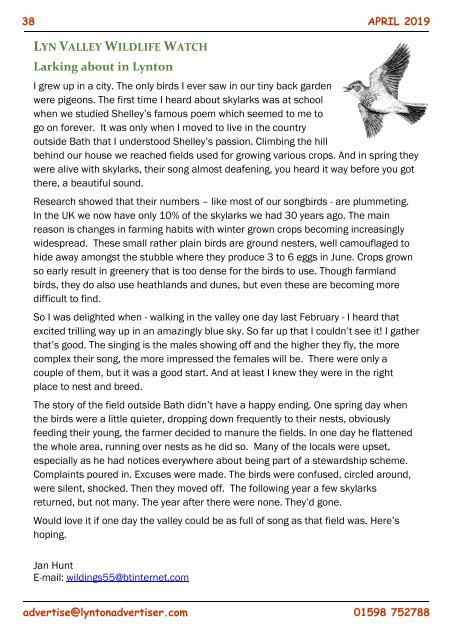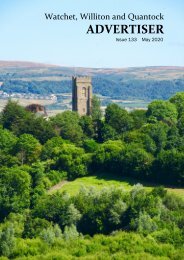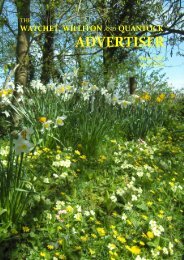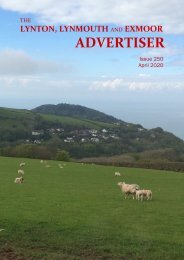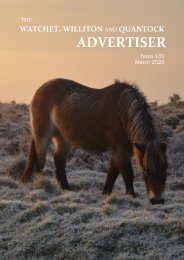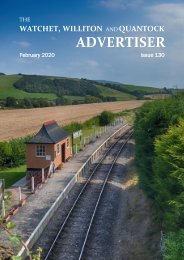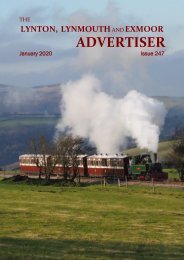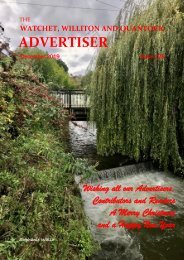Lynton, Lynmouth and Exmoor Advertiser, April 2019
Monthly publication for Lynton, Lynmouth and Exmoor
Monthly publication for Lynton, Lynmouth and Exmoor
Create successful ePaper yourself
Turn your PDF publications into a flip-book with our unique Google optimized e-Paper software.
`<br />
38 APRIL <strong>2019</strong><br />
LYN VALLEY WILDLIFE WATCH<br />
Larking about in <strong>Lynton</strong><br />
I grew up in a city. The only birds I ever saw in our tiny back garden<br />
were pigeons. The first time I heard about skylarks was at school<br />
when we studied Shelley’s famous poem which seemed to me to<br />
go on forever. It was only when I moved to live in the country<br />
outside Bath that I understood Shelley’s passion. Climbing the hill<br />
behind our house we reached fields used for growing various crops. And in spring they<br />
were alive with skylarks, their song almost deafening, you heard it way before you got<br />
there, a beautiful sound.<br />
Research showed that their numbers – like most of our songbirds - are plummeting.<br />
In the UK we now have only 10% of the skylarks we had 30 years ago. The main<br />
reason is changes in farming habits with winter grown crops becoming increasingly<br />
widespread. These small rather plain birds are ground nesters, well camouflaged to<br />
hide away amongst the stubble where they produce 3 to 6 eggs in June. Crops grown<br />
so early result in greenery that is too dense for the birds to use. Though farml<strong>and</strong><br />
birds, they do also use heathl<strong>and</strong>s <strong>and</strong> dunes, but even these are becoming more<br />
difficult to find.<br />
So I was delighted when - walking in the valley one day last February - I heard that<br />
excited trilling way up in an amazingly blue sky. So far up that I couldn’t see it! I gather<br />
that’s good. The singing is the males showing off <strong>and</strong> the higher they fly, the more<br />
complex their song, the more impressed the females will be. There were only a<br />
couple of them, but it was a good start. And at least I knew they were in the right<br />
place to nest <strong>and</strong> breed.<br />
The story of the field outside Bath didn’t have a happy ending. One spring day when<br />
the birds were a little quieter, dropping down frequently to their nests, obviously<br />
feeding their young, the farmer decided to manure the fields. In one day he flattened<br />
the whole area, running over nests as he did so. Many of the locals were upset,<br />
especially as he had notices everywhere about being part of a stewardship scheme.<br />
Complaints poured in. Excuses were made. The birds were confused, circled around,<br />
were silent, shocked. Then they moved off. The following year a few skylarks<br />
returned, but not many. The year after there were none. They’d gone.<br />
Would love it if one day the valley could be as full of song as that field was. Here’s<br />
hoping.<br />
Jan Hunt<br />
E-mail: wildings55@btinternet.com<br />
advertise@lyntonadvertiser.com 01598 752788


